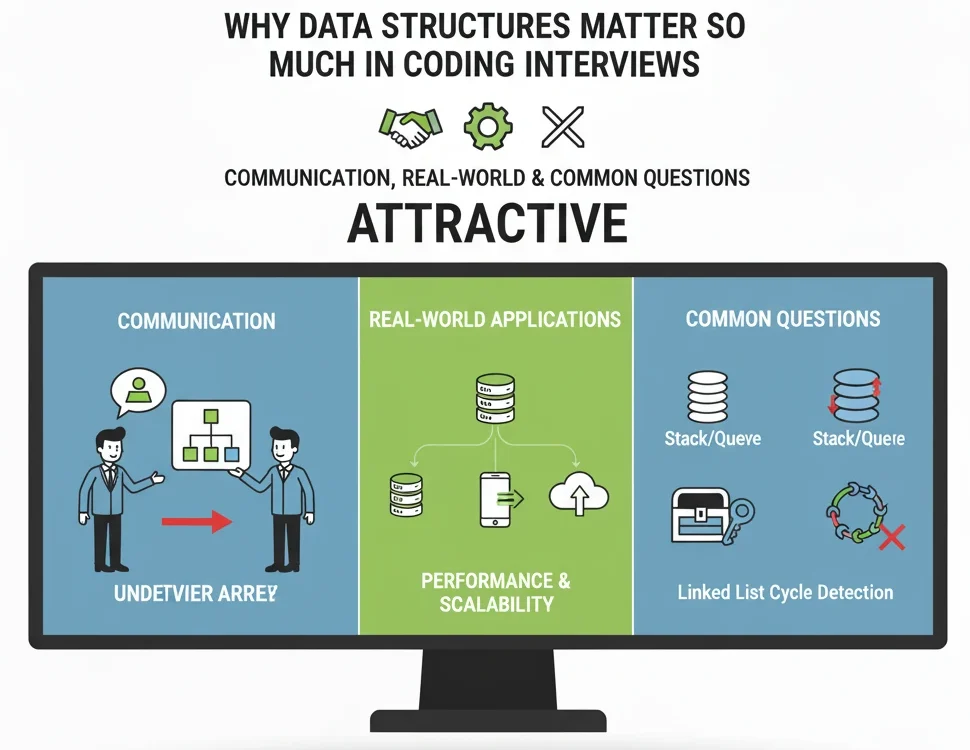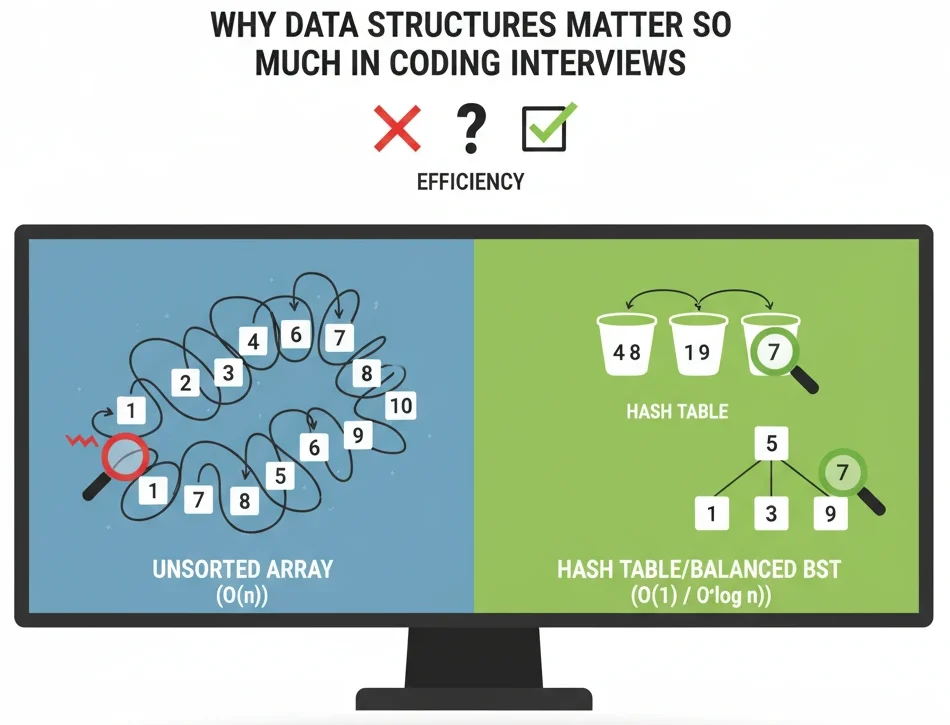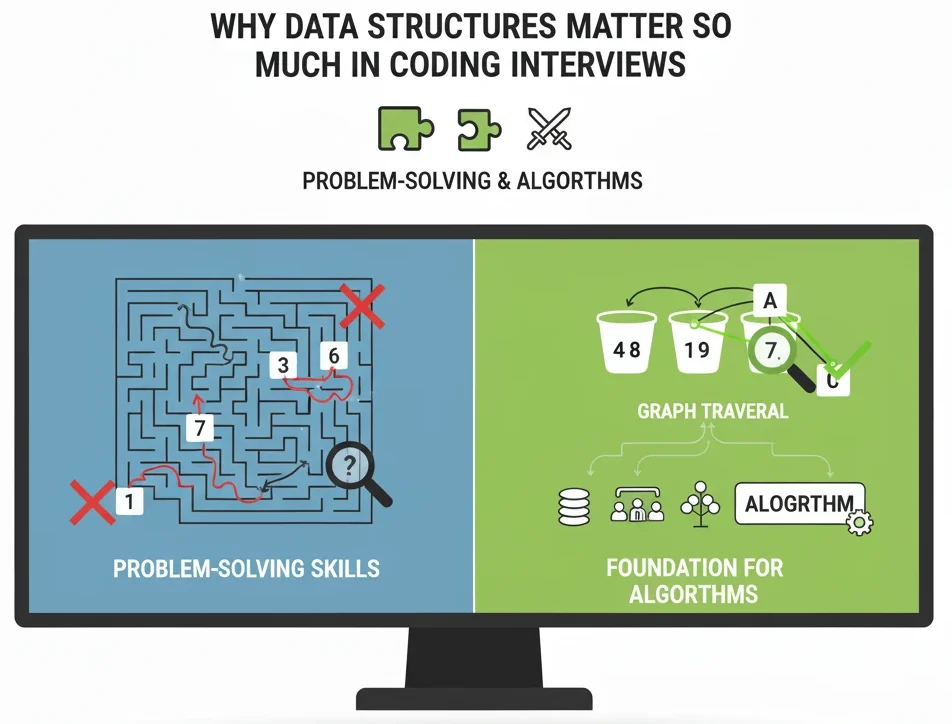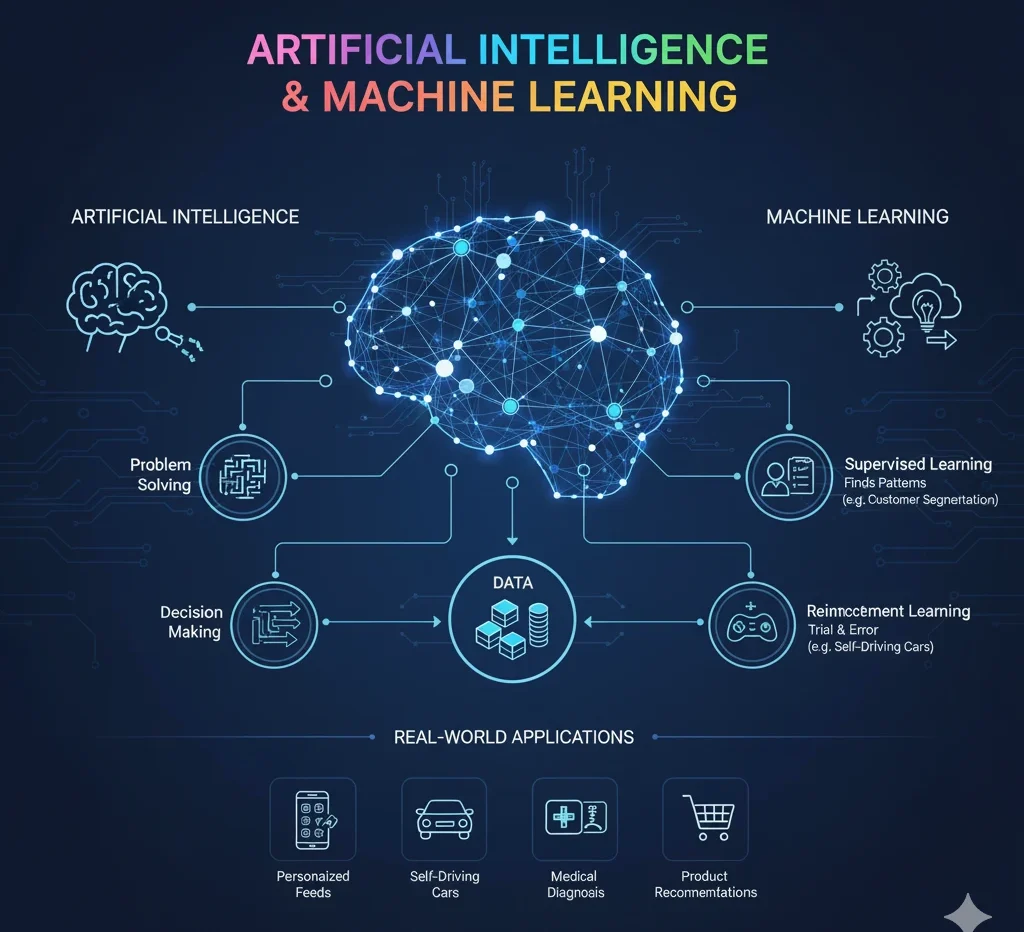Why Data Structures Matter So Much in Coding Interviews

If you’ve ever started preparing for data structures in coding interviews, you’ve probably heard this line a hundred times: “Master data structures.” At first, it might sound like another buzzword. But if you look closely, almost every coding question — whether it’s from Google, Microsoft, or even a startup — is built around data structures. That’s Why Data Structures Matter So Much in Coding Interviews.
So, why do interviewers focus on them so much? Here’s the simple version.
Data Structures = Organized Information
Think about your phone’s photo gallery. Think about your phone’s gallery. If every single photo you’ve ever clicked just dumped itself into one giant folder, finding that one selfie from last year’s trip would drive you crazy. Total mess, right?
Now, when you sort them into albums like Vacations, Family, or Friends, it suddenly feels manageable. That’s basically what data structures do — they give some order to the chaos.

- An array could be like a simple list of photos.
- A hash map works like your phone’s search bar, instantly finding the photo when you type a name.
- A tree could be the way your gallery sorts pictures by year and month.
This organization is why companies care about your understanding of data structures.
It’s Not Just Solving — It’s Solving Faster
Let’s say you need to find a friend’s name in a list of a million users.
If you check one by one, it might take forever.
But if the data is stored in a sorted way and you use binary search, you can find it almost instantly. In interviews, this speed matters. Interviewers don’t just want the right answer, they want the best answer. The right data structure often makes that possible.
Interviewers Care About How You Think in Coding Interviews
Here’s a secret: sometimes interviewers already know the problem can be solved in multiple ways. What they’re really checking is your approach.
For example, if they ask you how to suggest “friends of friends” in a social media app, and you say:
“I’ll represent users as a graph, where each person is a node and friendships are edges.”
Even if your code isn’t perfect, they’ll be impressed because you connected a real-world idea to the right data structure.
Data Structures Power Algorithms
Almost every algorithm you hear about is tied to a data structure.
- Most sorting tricks you learn in class, like bubble sort or merge sort, usually work on arrays or lists.
- Shortest path algorithms need graphs and heaps.
- Balanced search depends on trees.
If you don’t know data structures, algorithms feel like puzzles without pieces.
It’s Not Just for Interviews — It’s Real Life
Here’s the fun part: once you know data structures, you start noticing them everywhere.
- A chat app? That’s a queue managing messages.
- Undo button in Word or Photoshop? That’s a stack.
- Google Maps finding the shortest route? That’s graphs in action.
So when interviewers ask about them, they’re really checking if you can think like a developer who will build scalable apps in the real world.
How to Actually Get Noticed in an Interview
The truth is, most people can write code that works. What separates a great candidate from an average one is efficiency.
Suppose two candidates solve the same problem:
- Candidate A takes O(n²) time.
- Candidate B uses a clever data structure and brings it down to O(n log n).
Guess who gets the job?
Final Thoughts
Data structures aren’t just theory from your computer science classes. Data structures are basically the hidden reason why apps like Instagram, WhatsApp, or even your browser feel quick and smooth. Behind the scenes, they’re making everything run without you noticing.
That’s why interviewers bring up data structures so often. They’re not only interested in whether your code runs. They want to see if you can think in a smart way, fix things when they get tricky, and build solutions that won’t collapse once the data grows really big.

So if you really want to crack a tech job, don’t just cram a bunch of solved questions. Spend time actually understanding how data structures work. Try them out, break them, play around. Once you know how to pick the right one for the right problem, you’ll stop being “just another candidate” and actually stand out in interviews.
Learn why data structures are crucial for interview success.

